Wylie Beckert is a relatively new face on the genre art scene, and yet has made a very special mark in a short time. Wylie has refined a look that is unmistakably hers, and is one of the most prolific artists on the Every Day Original team.
You can find her on facebook, get lost in her portfolio site, or keep reading for some insight into what makes her tick, why she lives in Maine, and why night after night you can find her at the easel.

1. So wait, you’re new to making original art pieces? When did you start creating fully traditional work? What got you to go full-in on original pieces?
I’d certainly handled traditional media before I got into digital work – but on a pretty basic level (think badly-drawn ballpoint manga colored with markers, not epic oil paintings). I’ve always been more of a draftsman than a painter, so adding what was essentially digital comic book coloring to my pencil drawings felt more natural than picking up a paintbrush. I think late 2013 is when I first dug out some unused oils from college and started trying to learn to paint; it probably took five or six months to get the hang of the basics – I had to do a ton of experimentation with different media and techniques before I started to get a similar look to my digital work.
2. How does your digital training inform your traditional work? Was it like starting over or did some lessons transfer? What did you have to learn?
There was a huge amount of carryover from digital to traditional – in fact, I started having better luck with painting as soon as I ditched my early attempts at direct painting, and instead tried to replicate my digital process in traditional media.
I already had a pretty good idea of how to go from a pencil drawing to a finished piece – the hard part was figuring out what combination of materials could stand in for the dozens of Multiply, Color, and Screen layers I was used to using in Photoshop, and then trying to sort out what order everything needed to happen in to get the same end result.
I’m still tinkering with the process – while I finally feel like my traditional work has caught up to my digital work, I know there’s a certain amount of redundancy at each stage, and I’m always looking for ways to give the underdrawing (my favorite stage) a bigger role in the finished piece.
3. You say you really kicked things off about four years ago, and you’re already moving focus from commercial to personal work. Tell us more about that. Will you keep doing commercial work? Will your personal work help pay the bills? How?
I’ve been consistently frustrated in the search for the right kind of commercial work – I seem to have a kind of an oddball style that doesn’t fit in much of anywhere (too whimsical for a lot of adult brands, too many skulls for the average bedtime story) and as a result I usually find myself having to tone down one aspect of my work or the other.
At this (early!) point in my career, devoting some time to my personal work is a chance to clarify the direction I want to take with my art, and boil my portfolio down to better represent the aesthetic I’m really passionate about. I’m hoping to come out the other side a better artist, and I’m optimistic that the new direction will resonate with art directors as well.
So, commercial work is still very much on the table for me (art directors, you still know where to find me!) – I’m just giving myself permission to be more selective about which jobs I take in the short term, in order to (hopefully) reap the eventual rewards of channelling some of my working hours towards my own projects.
4. I spent summers in Maine as a kid. In fact I saw Return of the Jedi three times in the theatre when I’m pretty sure my mother just ran out of things to do. Which is to ask, why settle in Maine? Does your location influence your art? Are you settled there or do you think there’s another move on your horizon? What would inspire a relocation?
I think your impressions of Maine are accurate! I followed a boy here, never thinking I’d be staying more than a year or two, only to realize that (like the formless antagonist of a Stephen King novel) Maine is a sentient evil that DOESN’T WANT ME TO LEAVE.
While I don’t think the locale has had a major influence on the content of my images (it’s not as scenic here as people think it is), six years of living in relative isolation definitely gave me plenty of reason to buckle down and focus on my art. It’s hard to imagine I would have made the same strides with my work if I’d been living in a metropolitan area surrounded by… people? Are those the things you have out there in the real world?
At any rate, I can finally say with 100% certainty that I’ve spent my last winter in Maine. I’ve got my eye on Seattle – the idea of a climate where “cloudy” is the most common complaint sounds like an impossible utopia, and the Washington forests and coastlines are some of the most gorgeous landscapes I’ve ever seen.
5. You have to have more living space in Maine than we do in NYC. Do you collect art? What kind, why?
I’m a pretty staunch minimalist (with an impending cross-country move hanging over my head), so there isn’t much room for decorative/luxury items in my life at the moment. Even my own art is generally taped up in boxes in the closet, safe from coffee spills, waiting for the next convention. I’m always happy when I sell a piece because it means that it will finally get to see the light and bring someone some enjoyment.
6. Like many of our artists, you have a really solid online following. Take your instagram, you average about 15% like engagement based on your following, where top brands average about 4.3%. In his article 1000 True Fans Kevin Kelly defines a True Fan as “someone who will purchase anything and everything you produce.” Numbers aside, do you have True Fans? How do you engage with these people and keep them engaged with you? How do you know what they want, and do you tailor your shares to them?
I like to think some of my fans are True Fans! I haven’t tested the theory on a large scale yet (at the moment there isn’t a ton of Wylie Beckert merchandise on the market) but I’ve got a few loyal followers who’ve consistently picked up the few prints and originals I’ve had on offer, and sent messages of encouragement when I start a new project.
As to whether I tailor my posts to my fans – I think it’s actually the other way around. I post a ton of works-in-progress, process posts, and tutorials, and as a result a huge percentage of my fanbase seems to be made up of artists, both aspiring and professional. I always feel a little guilty for not engaging more – I’ll read a nice comment someone’s left on my work, spend five minutes trying to draft a suitably clever and thoughtful reply, then give up and go paint. My hope is that my fans are aware that my social media negligence is almost always the result of working hard to produce more art for them to look at!
7. Why do people collect your work?
I’d say the two things that draw people to my work are the sense of movement – flowing, decorative shapes and elegant lines – and the emphasis on character and storytelling that I bring to my work.
I also believe that a lot of the value in my originals at this stage in my career is their uniqueness – because I’m so new to traditional media, and my process is changing so rapidly, each new piece represents its own separate moment in time – completely different from past and future work even when there’s an overlap in content or style. While I’m working towards a slightly more settled technical process, I’m hoping there will always be this element of growth and change in my work.
8. Do you have other passions other than art? I know some other Mainiacs/illustrators like Sam Guay who keeps her own bees. What has the power to drag you away from the easel?
My favorite non-art-related hobby at the moment is “reading” – which is what I generously call listening to audiobooks while I paint. My other hobby, which I developed specifically to drag myself away from the easel, is sitting in a stupor with earbuds in and a blindfold on (so I can’t peek at whatever painting I’m working on), listening to music. On the rare occasions that Maine weather allows, I also enjoy running (music/audiobooks optional). I told you I was boring.
9. You have a very unique style and vision in your art, and yet I’m guessing your sources of inspiration come from many of the same places as all of us: TV, movies, books. How do you translate the same sources of inspiration into your own narratives? Can you walk us through, from a specific source of inspiration to a finished piece?
I’ll use a recent example: the King of Spades from my ongoing series of playing card illustrations, Wicked Kingdom. My main source of inspiration here was the classic playing card art we’re almost all familiar with. My first decision was what part of the source material I wanted to draw from and build on; I chose to focus on the reversible composition (two faces for the same character) and create a character with dual identities – opposing each other (in a good/evil sort of way) but thematically interrelated.
With that idea in mind, I drew inspiration for the character from the Spade symbol – it made me think that the characters in this suit would have to be botanists, gardeners, or otherwise involved with plants. Asking further questions on this concept (why would a king stoop to being a gardener?) informed other aspects of the character (the King of Spades has let his kingdom fall by the wayside, and has turned instead to caring for his garden). By looking for parallels and contrasts (what other occupations could involve working in the dirt? What might be the opposite of bringing life out of the ground?) I hit on the idea for the other half of the character’s dual identity: a gravedigger. Doing some general brainstorming brought up some possible elements to include in my painting (types of plants, themes to consider).
This ideation process helps me narrow down the essentials I wanted to include in my image to get the message across (two opposing versions of the same character; cabbages, skulls, tombstones, and shovels.) I try to visualize the layout before putting pencil to paper; an extremely rough, not-even-stick-figure thumbnail lets me double check that everything will fit properly into a rectangular page; if everything seems to be in order, I move on to a slightly larger thumbnail on toned paper (around 3×5″) to establish a value structure – always designing the most important elements (in this case, faces, skull, and seed) to be the areas of strongest contrast.
From there, all that remains is the comparatively simple final drawing and painting! As you can probably tell, this line of thinking can lead interesting places even with a very straightforward source of inspiration. The potential directions you can take with more complex inspirations (an entire book, for example) are pretty much infinite.
10. Now, I’m completely biased as I teach and run classes for SmartSchool, but tell us about how and why you chose to enroll in an art course when your art is and was already at such a refined point. Why go to something like the IMC (Illustration Master Class)?
There have been various points where I was okay with my art, but then got a slight push and realized how much better it could be. It’s hard to define exactly why, but SmArt School was one such push, and so was IMC. I think once you’ve reached a level that represents your self-directed “best”, it can be hard to know where to go from there (or even to realize that there’s an “anywhere” you should be going)- it gets trickier to spot the areas where you need improvement. Outside instruction has definitely helped me get through that.
At Illuxcon last year, an artist I really admire was looking at two of my pieces side-by-side (my painting from IMC, and the one I completed immediately afterwards) he pointed to the latter and asked “Why is that one better?” (not a rhetorical question). I can’t really point to any one moment of instruction that caused that shift in my own standards and capabilities, but it definitely happened.
11. If you’re already working, what do programs like this do for you? Is it all professional or is there a personal/social element?
I’d say the two are pretty closely related. I think interacting with other artists has had a significant impact on me professionally – not by the expected route of “networking equals more jobs”, but rather because there’s a lot to be gained by seeing new art, talking shop, and finding out about other people’s experiences and methods(and stealing them for one’s own betterment). And better art DEFINITELY equals more jobs. Not to mention how much fun artists are if you put a large group of them in a small room!
12. You’ve been doing a bunch of conventions in the last year or two. How do you choose which to go to? How do you decide what to bring? Do these pay off? How? Do they make you money, get you jobs? How do you quantify whether a convention is “worth it?”
This year, I’m attending Spectrum Live and Illuxcon – I chose these two because although they’re fairly small conventions, there’s a great social atmosphere and everyone there is crazy about illustration – people are there for the art rather than for cosplay and celebrities (well, except for the art celebrities, I guess).
I try to keep it simple and bring a selection of my best/most recent work – a few originals and a portfolio – along with all the heavy machinery required to display it all. Because these are such small conventions, I don’t generally attend/exhibit with the expectation of tons of sales (I haven’t even decided whether or not I’ll be bringing any prints with me this time around). Instead, I look at it as self-promotion (cultivating some of those True Fans you mentioned) and a fun social gathering (whose expense I justify with “networking!”).
Financially, I consider the convention to have been worthwhile it if I break even with the expense of attending (either through sales of original work or commissions secured). Outside of my web presence & social media, these conventions are my main marketing effort, so I’m expecting to invest some money in them from the outset, and am okay with taking a bit of a hit to attend.
13. I’m reviewing the portfolio review sign ups for Spectrum Live and I see you signed up. First, congrats for making it in, we had to shut it down after 90 seconds. We were flooded. Second, you’re fairly well-established now and have a look people can count on. What do you hope to get out of a review from the ADs at conventions?
At this point in my career, I’m putting my work out there less for critique and more to reiterate my interest in working with these art directors; while I feel like I’m pretty well-known in the fantasy art community, very little of my work actually comes from within it. I’m still looking for that first commission from WOTC, Tor, Orbit. I want in! It’s been a year since I last cornered anyone for a portfolio review (for reference purposes, this was before I had any traditional media work to show) so the direction of my work has changed quite a bit; I’m hoping it’s more to the tastes of the brands these ADs represent, or if not, that they might be able to put in a good word for me with the rest of the art director’s cabal.
14. Artists throughout history have overcome what seem like career-ending obstacles, and some have turned these into assets. Beethoven was deaf in his later years, Monet had vision issues, Van Gogh is rumored to have been color blind, the famous singer Andrea Bocelli is blind. You have a mild case of Prosopagnosia (face blindness), and don’t always recognize people right away. Still, you illustrate your figures with facial expressions in an enviable range of emotions, ages, genders, and colors. Does Prosopagnosia affect your work in any way? Do you consciously work with or against it?
I think I first realized that faces were an issue for me because of my art – it took me a really, really long time to grasp drawing faces. By comparison hands – which should be harder, they have more parts! – come pretty easily.
I think most of the reason I draw reasonable faces now (in addition to the tons and tons of practice I made myself do) is because I spend a HUGE amount of time on them. I’ve improved to the point that now I can get the faces in my art right – the first time – about half the time. The other half of the time, it can take 8 hours of reworking to get something that looks more or less human, and even more time to make it anything like the appropriate gender, age, etc. If they need to actually be “pretty”… add more hours. When I start an illustration, I always draw the faces first, because I know there’s a chance I’ll destroy the paper by over-erasing and have to start over from scratch. It’s a pain, but I think it’s worth the effort – faces are such an important part of most images that doing them right isn’t really negotiable.
15. In an email exchange with me, you said you’re boring. Because you work a lot? As a parent and a freelancer I understand the kind of passion that keeps you out of the social scene and into things like art and family. Still, there are theories about the importance of getting away of work and home life, and how that will make you a stronger person and improve your work. My friends who do life coaching encourage the improvement of self and work in service of the relationships we have to others. How do you respond to the idea that in order to live a complete life we necessarily must relate to others, in person? How do you do this in your own life?
I’d generally agree with that; the need for social structure is hardwired in most people, and while I’m sure there are a few rare exceptions I wouldn’t say I’m one of them. I’m looking forward to having a well-rounded life someday!
I think my current location has a lot to do with how intent I am on my work – working from home in an area that gets six months of winter, it’s surprisingly easy to become a complete shut-in. On the whole, though, I don’t regret focusing on my art for the past few years. Living somewhere you don’t love is draining, and I think allowing myself to narrow my focus to my art – which has dual importance in my life as both career and passion – has been the right move. The skills you acquire in becoming a good artist (patience, resilience, grocery shopping on a budget) carry over to all the other areas of your life, and I think they conspire to make you a better person.
16. Any final thoughts?
Just to keep an eye out for more art! Everyone on EDO is steadily upping their game; I know I can’t wait to see what’s coming out next, and I’m hoping I’ll get to continue contributing in some small way!
ORIGINALS FROM WYLIE
-
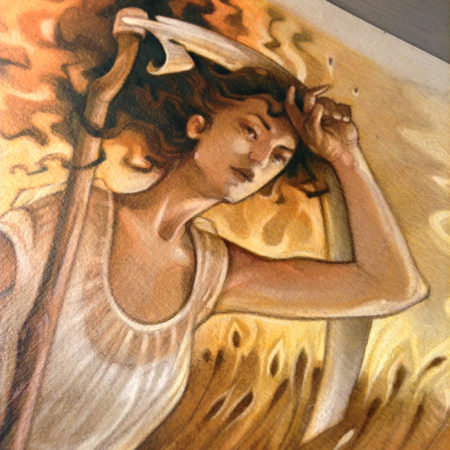
Heatwave
By Wylie Beckert $450 $450 Read more -
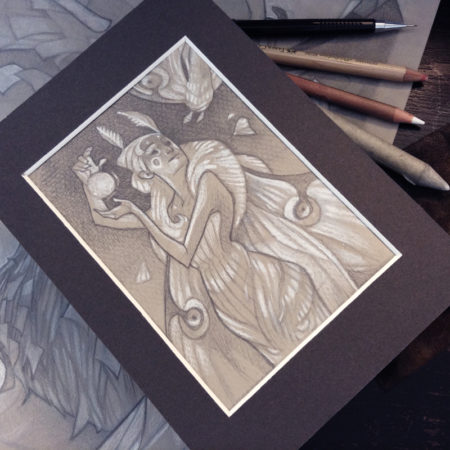
The Flame
By Wylie Beckert $100 $100 Read more -

Seasons
By Wylie Beckert $175 $175 Read more -
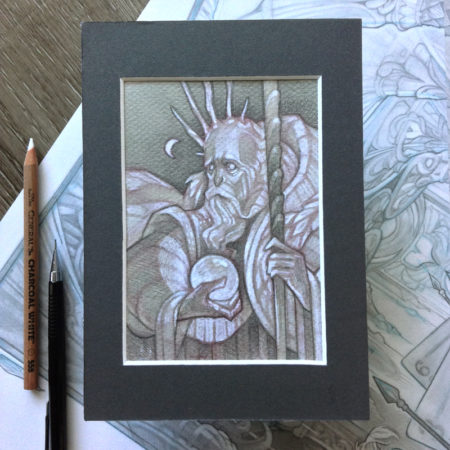
Moonborrow
By Wylie Beckert $100 $100 Read more -
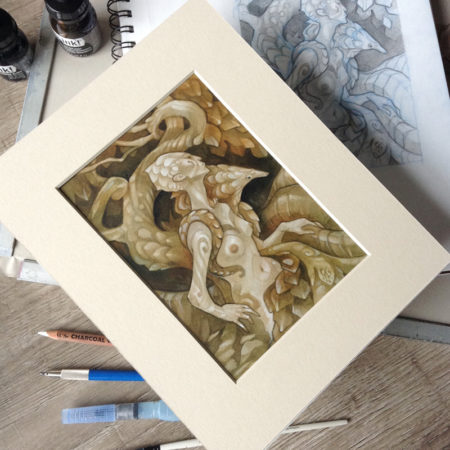
The Scale Tree
By Wylie Beckert $400 $400 Read more -

Betta Magick
By Wylie Beckert $385 $385 Read more -

Rabbit Magick
By Wylie Beckert $350 $350 Read more -
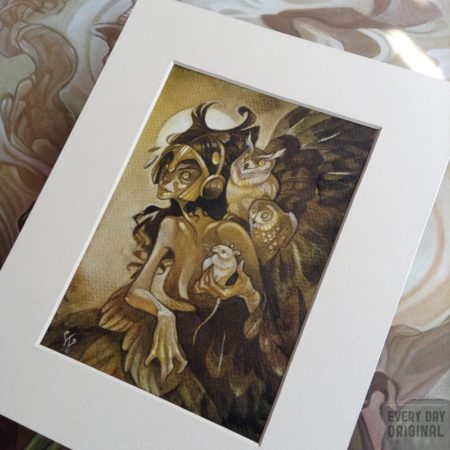
Owl Magick
By Wylie Beckert $350 $350 Read more -

Autumn Crown
By Wylie Beckert $350 $350 Read more -
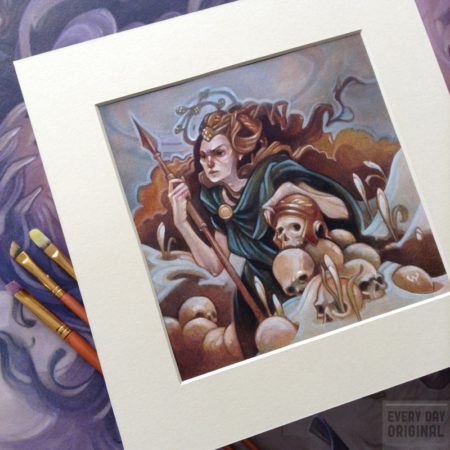
Boudica
By Wylie Beckert $400 $400 Read more -
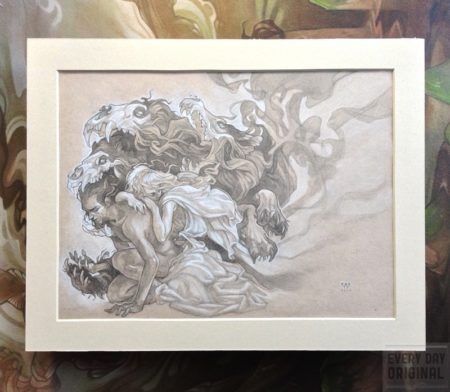
Tam Lin
By Wylie Beckert $300 $300 Read more -
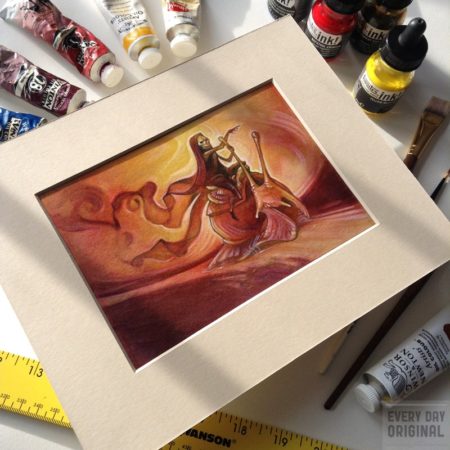
Sunset Ride
By Wylie Beckert $350 $350 Read more -
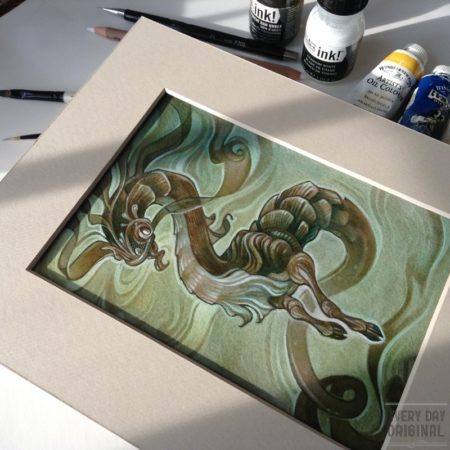
Capriquarius
By Wylie Beckert $350 $350 Read more -

Magic Fish
By Wylie Beckert $225 $225 Read more -

Wild
By Wylie Beckert $100 $100 Read more
's EDO GALLERY
[fbcomments num=”50″ countmsg=”wonderful comments!”]
